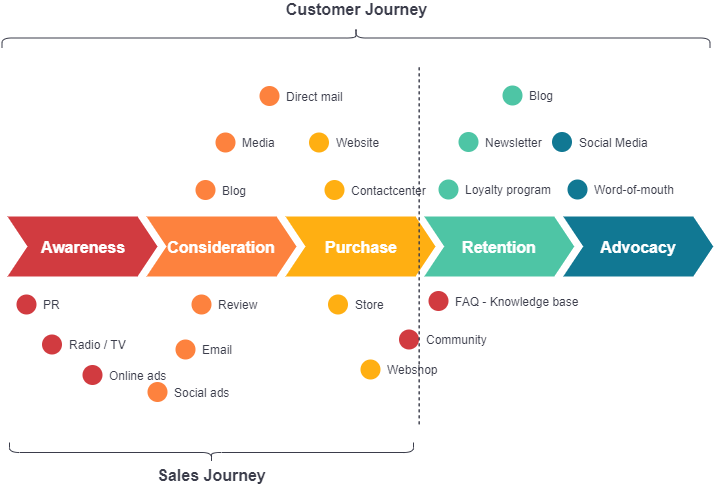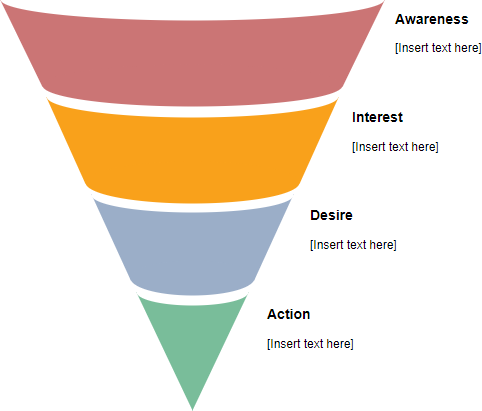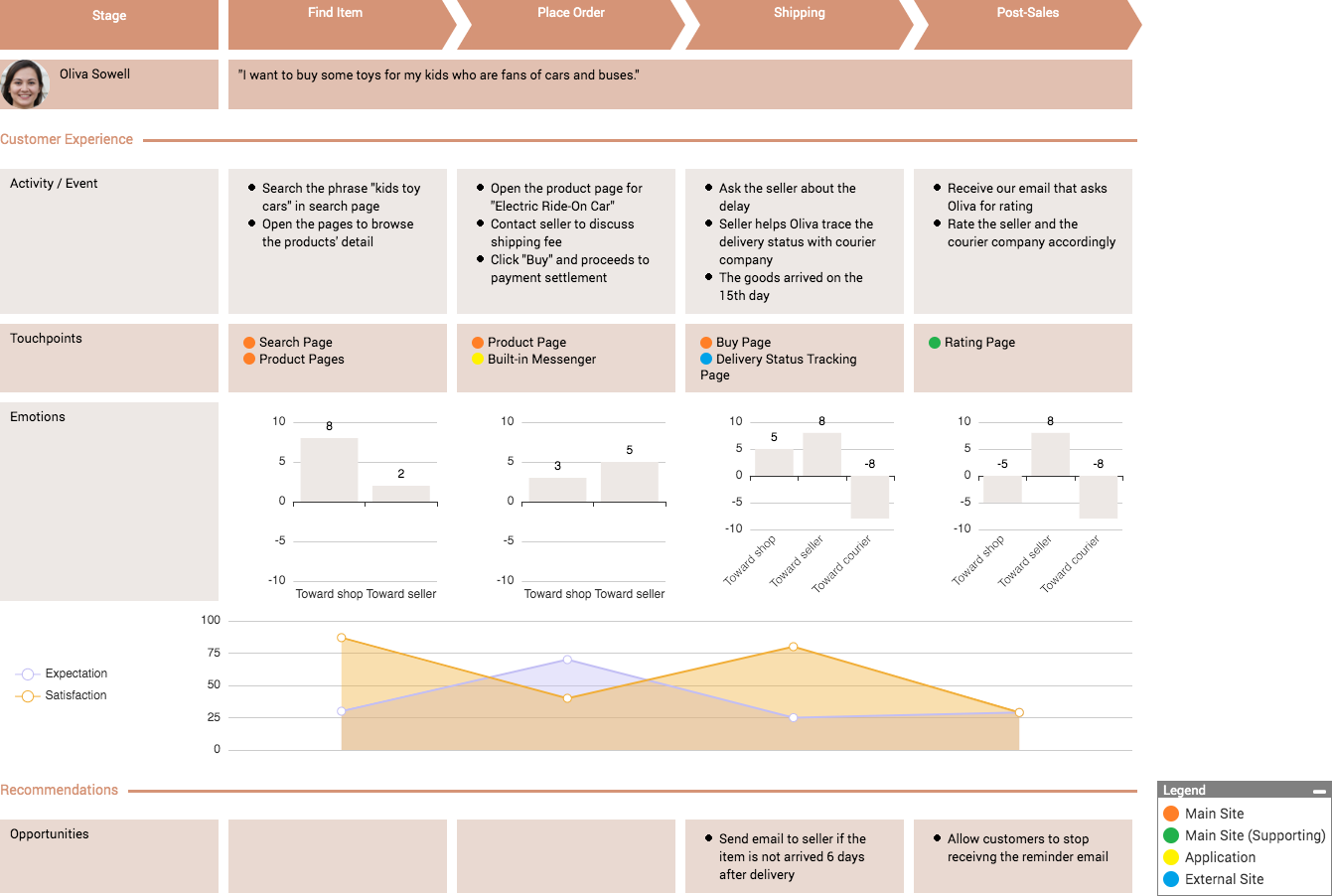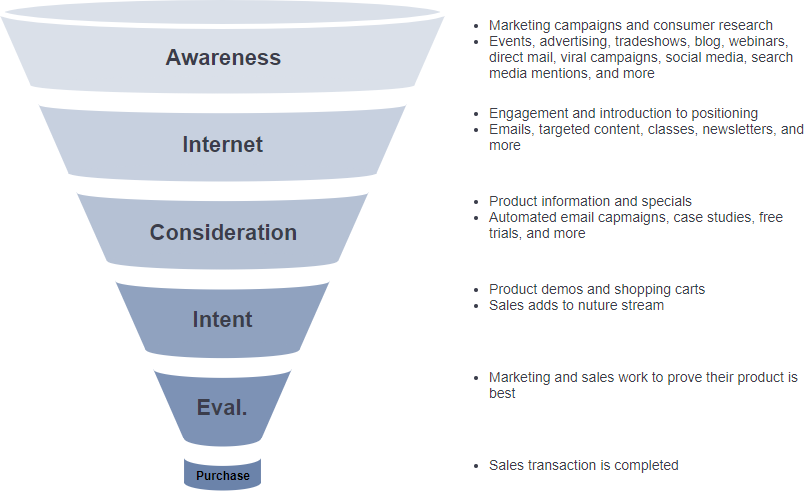Marketing Funnel analyses the entire buyer journey. A potential buyer doesn’t become a customer automatically until the very last stage (if our product still under consideration). Thus, a paternal buyer is not equal to your customer.
But getting customers to purchase our products and services again isn’t the only goal. The real success of a business depends on return customers. We want to establish customer loyalty, increase trust in our brand, in turn, will improve customer retention.
In customer journey mapping, we should focus on further developing relationships with our customers through regular engagement. As the relationship with our customers doesn’t end the moment they’ve made a purchase.
What is a Marketing Funnel?
A sales funnel is a buying process that companies lead customers through as they are purchasing services or products. The model uses a funnel as an analogy because a large number of potential customers may begin at the top-end of the sales process, but only a fraction of these people end up making a purchase.
A sales funnel is divided into several steps, which differ depending on the particular model. As a prospect passes through each stage of the funnel, it signifies a deeper commitment to the purchase goal. Most businesses, whether online or conventional, use this model to guide their marketing efforts in each stage of the marketing funnel.

A typical marketing funnel has 4 basic Sales Funnel stages inherited from the AIDA model:
- Awareness – The consumer becomes aware of a category, product or brand (usually through advertising)
- Interest – The consumer becomes interested in learning about brand benefits & how the brand fits with the lifestyle
- Decision – The consumer develops a favorable disposition towards the brand
- Action – The consumer forms a purchase intention, shops around, engages in trial or makes a purchase
AIDA is all based on the assumption that consumers will move through experience specific a series of (AIDA) stages when they make their purchase decision.

Edit this AIDA Funnel Diagram Template
Customer Journey Map
The customer journey is normally the entire lifecycle (from a customer becoming aware of a specific need to habitually using your service). Alternatively, a customer journey map (CJM) could also focus only on a specific interaction or stage of relationship with your brand (making a complaint; completing a renewal; buying online).
CJM helps us understand what customers go through and improve the quality of your customer experience, ensuring consistency and seamless experience at all touchpoints and across all channels. There is no other more effective substitution for listening to your customers about how the steps in the journey are working out for them.

Edit this Customer Journey Map example
Customer Journey Mapping is a compact visualization of end-to-end customer experience. It helps businesses deepen their understanding of their customers’ behaviors, thoughts, and feelings, empowering businesses to make value-driven decisions based on a customer experience model.
Create Your Marketing and Sales Funnel

Edit this Marketing Funnel template
